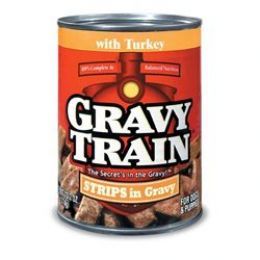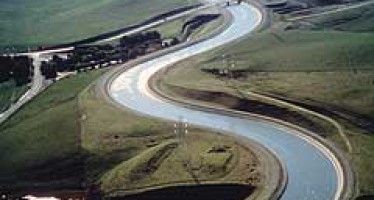High-speed special interest halts bill
April 24, 2012
By Katy Grimes
The Legislature appears to have killed one more attempt to reel in the out-of-control high-speed rail checkbook. But despite facts, numbers and alternatives to the nearly $100 billion project, Democratic lawmakers appeared to be useful tools in the high-stakes game of rail bucks.
 After spending more than $500 million on nothing, the plan no longer represents what the voters approved in 2008.
After spending more than $500 million on nothing, the plan no longer represents what the voters approved in 2008.
AB 1455, by Assemblywoman Diane Harkey, R-Dana Point, was on the agenda Monday in the Assembly Transportation committee. And once again, open disdain for any accountability of rail spending was obvious, despite her urging fiscal responsibility for the health of everyone in the state.
“This is deja vu–I was here one year ago with a similar bill,” Harkey said. Calling the rail plan “Cocaine for the train,” and “crack for the track,” Harkey once again explained that there is no funding source for the train system and it is just a nifty idea.
“The original $43 billion price tag has more than doubled, there is no private money, and the feds are not coming through,” Harkey said. “All that remains is a restricted bond, of which $950 million is allocated to regional rail, and $9 billion for high-speed rail.”
“The federal government and Democratically controlled Senate are not sending us high-speed rail money,” Harkey said. “Cap and trade revenues don’t exist, which is supposed to be about emission reductions anyway.”
“There is no ridership model,” Harkey continued, “no cost analysis, and the High-Speed Rail Authority claims that it will cost 10 cents a mile, when in Europe the cost is 40 cents per mile.”
Harkey added that there are no right-of-way agreements, a crucial step in the building process. For land owners in the way of the track, purchase agreements must be made to buy the land. But Harkey has repeatedly said that no such agreements exist yet.
Agreements with existing rail companies also need to be worked out.
“The Legislative Analyst’s Office, the State Auditor, and U.S. Government Accounting office warn against it,” Harkey added. “And, it needs a subsidy. All trains have subsidies.” But the legislation and bond initiative promised “no state operating subsidies.”
Harkey reminded the committee that Californians can get high-speed travel from San Francisco to Los Angeles on Southwest Airlines.
“What we need is water, power, roads and dependable rail from county to county. It won’t pay for itself,” Harkey said. “This will create more unemployment in the Central Valley–there is no reason to cut through prime farm land. Send the bill back and ask voters if they want to spend the money for regular rail instead.”
AB 1455 would “reduce the amount of the indebtedness authorized by the act to an amount not less than the amount contracted at the time of the reduction or to repeal the act if no debt has been contracted. This bill would reduce the amount of general obligation debt authorized for high-speed rail purposes.”
According to Harkey, the bill makes use of a little known section of the California Constitution, Article XVI, which allows the Legislature to repeal uncontracted bond debt. AB 1455 would repeal the remaining $9 billion in available state debt funding for the project, but allow $950 million to be used for local and regional rail projects.
The voters were sold a lemon
“The voters were deceived,” Harkey said. “The project lacks sufficient private, public or debt funding to complete even a requisite operating segment, as required under Proposition 1A.”
“California is struggling with long term deficits and debt,” Harkey added. “The governor claims we need more taxes; our existing infrastructure is in dire need of extension and repair; and voters are suffering from buyer’s remorse.”
Just as happened with Republican Sen. Doug LaMalfa’s recent legislation to put high-speed rail back before voters, facts and data were not enough to pass the bill.
With the support of the City Council of San Juan Capistrano, the Kings County Board of Supervisors, the Orange County Board of Supervisors, the San Diego Board of Supervisors, Carlsbad Mayor Matt Hall, Burlingame City Council members and the Howard Jarvis Taxpayers Association, it was clear that the momentum is there to stop the existing high-speed rail plan, and either modify it as Harkey suggests, or take the entire plan back to voters.
Testimony for Harkey’s bill was strong. “This is a poor investment,” said Michael Bronner, a Burlingame city council member. Bronner testified that he is an investment banker as well as a council member, and has to make decisions about other people’s money. “None of the current analysis was available in 2008. This is just a more comfortable trip for the wealthy from San Francisco to Los Angeles.”
“This project screws our kids,” said William Grindley, who worked extensively on the high-speed rail financial reports.
Big-Labor Opponents
Opposition was predictable. The High-Speed Rail Authority testified that Harkey’s bill would end the high-speed rail project.
“This is one of the very few ways the Legislature can create jobs and spur the economy,” said Ray Trujillo with the State Building and Construction Trades Council, a labor union for construction workers. “Thousands of high paying jobs,” he added. “The alternatives to High-Speed Rail–runways, highways, roads–costs twice as much.”
That comment caused a stir in the audience, and several people sitting around me said that was a lie–the cost to beef up airports, highways and roads would be much less. “Waiting to build the train would only be more expensive,” said Karen Greene Ross with the HSRA.
Other opponents included the American Council of Engineering Companies of California
and the California Labor Federation, AFL-CIO, and the Teamsters.
Harkey answered opponents’ with a few more facts: “It will cost $1.96 million per job created for High-Speed Rail. This isn’t a jobs program,” Harkey said. “Instead, for $100 million, we could create 1.8 million highway maintenance jobs.”
Harkey said, “220 mph trains don’t exist. This is not a business plan, it’s an idea. We have $3.5 billion of federal stimulus dollars which must be spent before September 2017.” Harkey said that the real plan was just to build some track to get the funding. Trains aren’t even part of the picture yet.
What sounded reasonable to voters in 2008 is no longer even possible without bankrupting the state. This is a special interest project run amok.
Despite Harkey’s pleas that high-speed rail is not a partisan issue, the committee voted entirely along party lines, 3-6 against. The bill remained on call to allow the absent committee members cast votes.
Related Articles
Federal board pushes high-speed rail – a little
Two recent events are keeping California’s high-speed rail project rumbling forward – either to eventual construction or wasteful oblivion. The
State mulls tough renewables law
JUNE 30, 2010 By JOHN SEILER The dream of Gov. Arnold Schwarzenegger and a majority of the California Legislature is
Rainfall study contradicts CA water policy
In the mid-1970s, it was common for many Santa Barbara County communities to deny water meters to limit growth and




